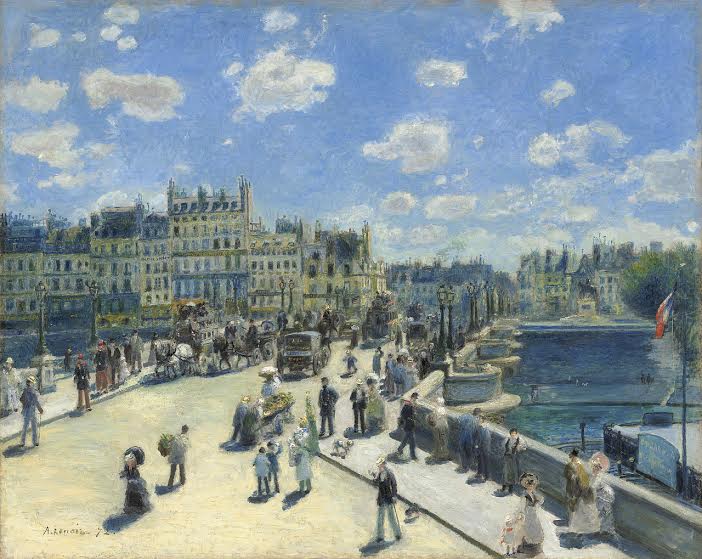I Like Bridges
Especially the bridges in Paris. They are all so unique and each has a different history. If you’ve been to Paris and have not taken one of the river cruises, you should definitely plan on doing that the next time you have some free time. Looking at the bridge from the perspective of being on the water will offer you glimpses of sights you can’t see from either on the bridge or from the street.
The Pont de la Concorde is a great example. Commissioned in 1755 with construction beginning in 1787, the bridge connects the Left Bank along the Quai des Tuileries with the Place de la Concorde on the Right Bank. The bridge was built and competed (1791) during the French Revolution. The massive stones from the Bastille (dismantled 1789–90) were used to build the bridge. The only way you can see those stones is on the river cruise (look up as you cruise under it). The bridge was widened in 1930 to double its size. Unfortunately, the widening and subsequent renovation in 1983 obscured the original stones.
Pont Neuf

Pont Neuf or “New Bridge” is actually the oldest bridge in Paris. The bridge was conceived during the reign of Henri II (1547–59), with construction starting in 1578 under his son, Henri III, and finished in 1607 under Henri IV. This was a most unusual bridge at the time.
First of all, there were no houses constructed on it. For the first time, Parisians could see the river as they crossed it (Henri IV wanted the pedestrians to have an unobstructed view of the Louvre).
Second, the street was paved. This was done to protect the pedestrians from the mud thrown up by the horses. It was the first bridge where sidewalks were built at a higher elevation than the street. This was done to keep the pedestrians safe (it was routine to have accidents in the narrow streets when the horses and carriages would run over a pedestrian). The half–circular bastions on the bridge were built to allow merchants, entertainers, and others to rent or socialize.
With the Île de la Cité in the middle, Pont Neuf is actually two bridges linking the Left and Right banks. The statue on the island is Henri IV. During the French Revolution, the original statue was destroyed. Fortunately, a cast of the original survived so in 1818, an exact replica was erected. Inside the statue are four boxes. They contain a life history of Henri IV, a 17th century parchment certifying the original statue, a document outlining how the new statue was commissioned, and a list of the contributors to the new statue.
The River Seine
In future blog posts, I’ll feature some of the other bridges that span the Seine. Every one of them has a fascinating history behind them. My third book is entitled, Where Did They Burn the Last Grand Master of the Knights Templar?—A Walking Tour of Medieval Paris (987–1547). A hint: it was near the Pont Neuf. Stay tuned.
Do we have a lot of stories? Of course we do. I’m looking forward to sharing these with you. Please continue to visit our blog and perhaps subscribe so that you don’t miss out on the most recent blog posts.
Thanks so much for following my blog and my little journey through this incredibly interesting process of writing a series of niche historical travel books and then getting the bloody things published.
-Stew
Please note that I do not and will not take compensation from individuals or companies I mention or promote in my blog.
Are you following us on Facebook and Twitter?
Copyright © 2014 Stew Ross

